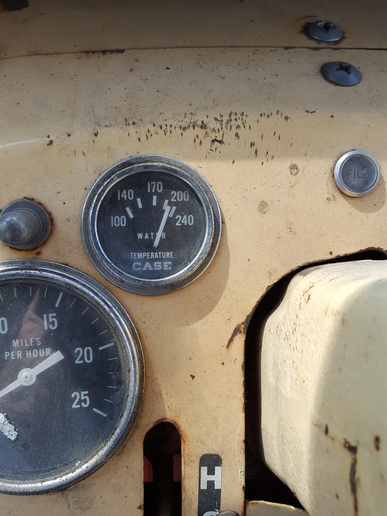You should upgrade or use an alternative browser.
- Thread starter Ande
- Start date
casecollectorsc
Well-known Member
- Location
- E central SD.
Adirondack case guy
Well-known Member
jon f mn
Well-known Member
John Saeli
Well-known Member
Dieseltech
Well-known Member
- Location
- Akron, Indiana
Dieseltech
Well-known Member
- Location
- Akron, Indiana
Ande
Well-known Member
What isses me off is my other drove that road that is did where it got right up too 200, and the other was around 140.

I also agree that soft water is better than antifreeze as the coolant. I have read that in "scientific" readings but don't ask me where !!
John Saeli
Well-known Member
kevinthefixer
Member
John Saeli
Well-known Member
am reading this discussion and enjoying each one's input,(reply to post at 08:21:04 05/20/19)
I, as well as most on here have been around these engines for all my life and was around when they were introduced, I guess that makes me an old guy, My opinion, most head cracking is the result of improper cool down or lack of cooling system care, loose fan belts,dirty radiator cores, etc.
I wish people would use block heaters and avoid ether as well as John does but I do not believe that ether on startup causes cracked heads, it does lead to other serious problems such as broken rings or broken ring lands on pistons, blown gaskets. I have seen ether abused to the point that it sounds like the engine is coming apart. I also believe that those engines can be run over 200 degrees and from what I am seeing the 160 stats are not lowering the actual operating temp significantly as I mentioned in another post if u guys are still running 200 degrees working.
I have built hand made blower setups for 830s and have a couple running at over 90 HP and have had no complaints of head cracking.
Frontline1
Member
Similar threads
We sell tractor parts! We have the parts you need to repair your tractor - the right parts. Our low prices and years of research make us your best choice when you need parts. Shop Online Today.
Copyright © 1997-2024 Yesterday's Tractor Co.
All Rights Reserved. Reproduction of any part of this website, including design and content, without written permission is strictly prohibited. Trade Marks and Trade Names contained and used in this Website are those of others, and are used in this Website in a descriptive sense to refer to the products of others. Use of this Web site constitutes acceptance of our User Agreement and Privacy Policy TRADEMARK DISCLAIMER: Tradenames and Trademarks referred to within Yesterday's Tractor Co. products and within the Yesterday's Tractor Co. websites are the property of their respective trademark holders. None of these trademark holders are affiliated with Yesterday's Tractor Co., our products, or our website nor are we sponsored by them. John Deere and its logos are the registered trademarks of the John Deere Corporation. Agco, Agco Allis, White, Massey Ferguson and their logos are the registered trademarks of AGCO Corporation. Case, Case-IH, Farmall, International Harvester, New Holland and their logos are registered trademarks of CNH Global N.V.
Yesterday's Tractors - Antique Tractor Headquarters
Website Accessibility Policy

